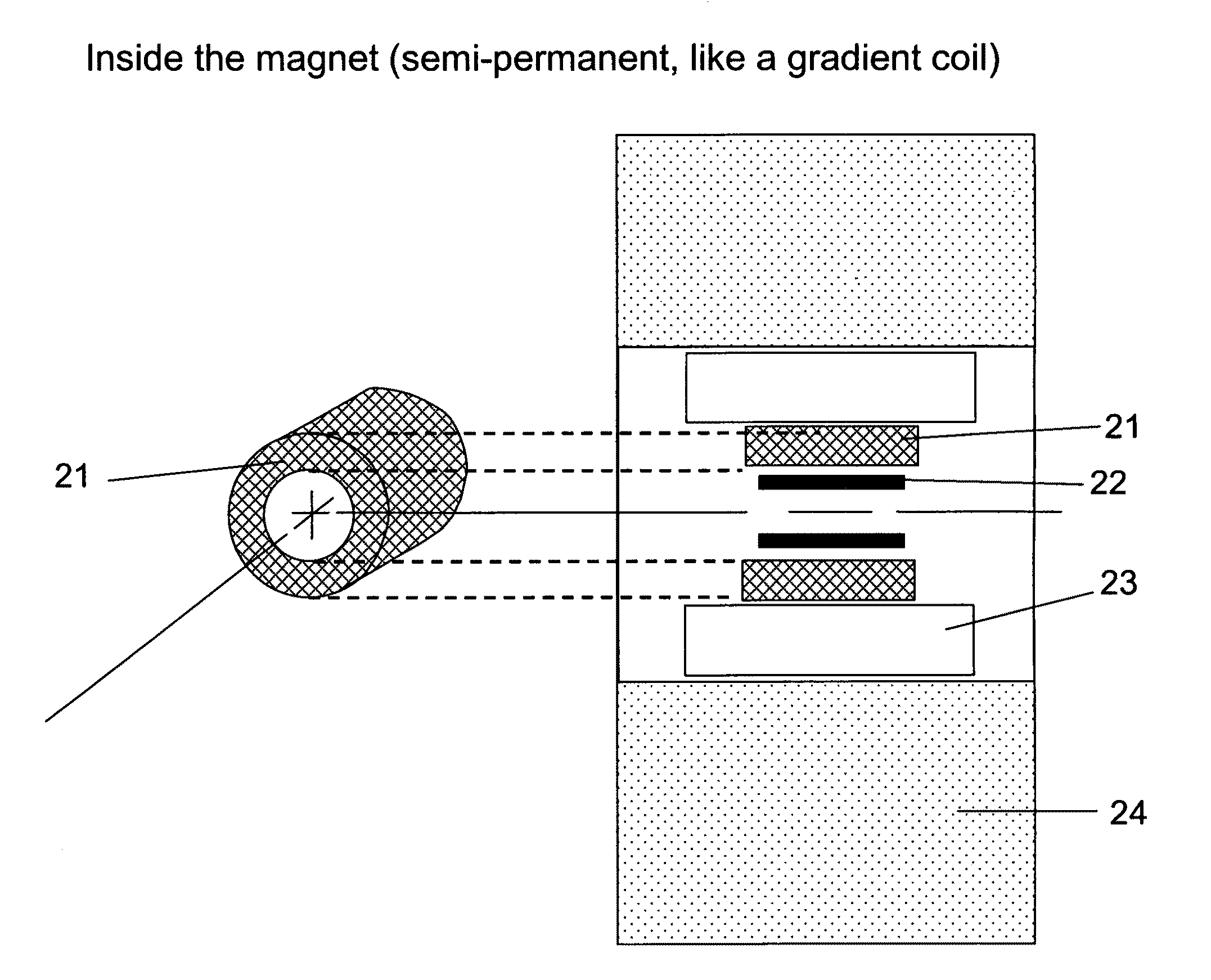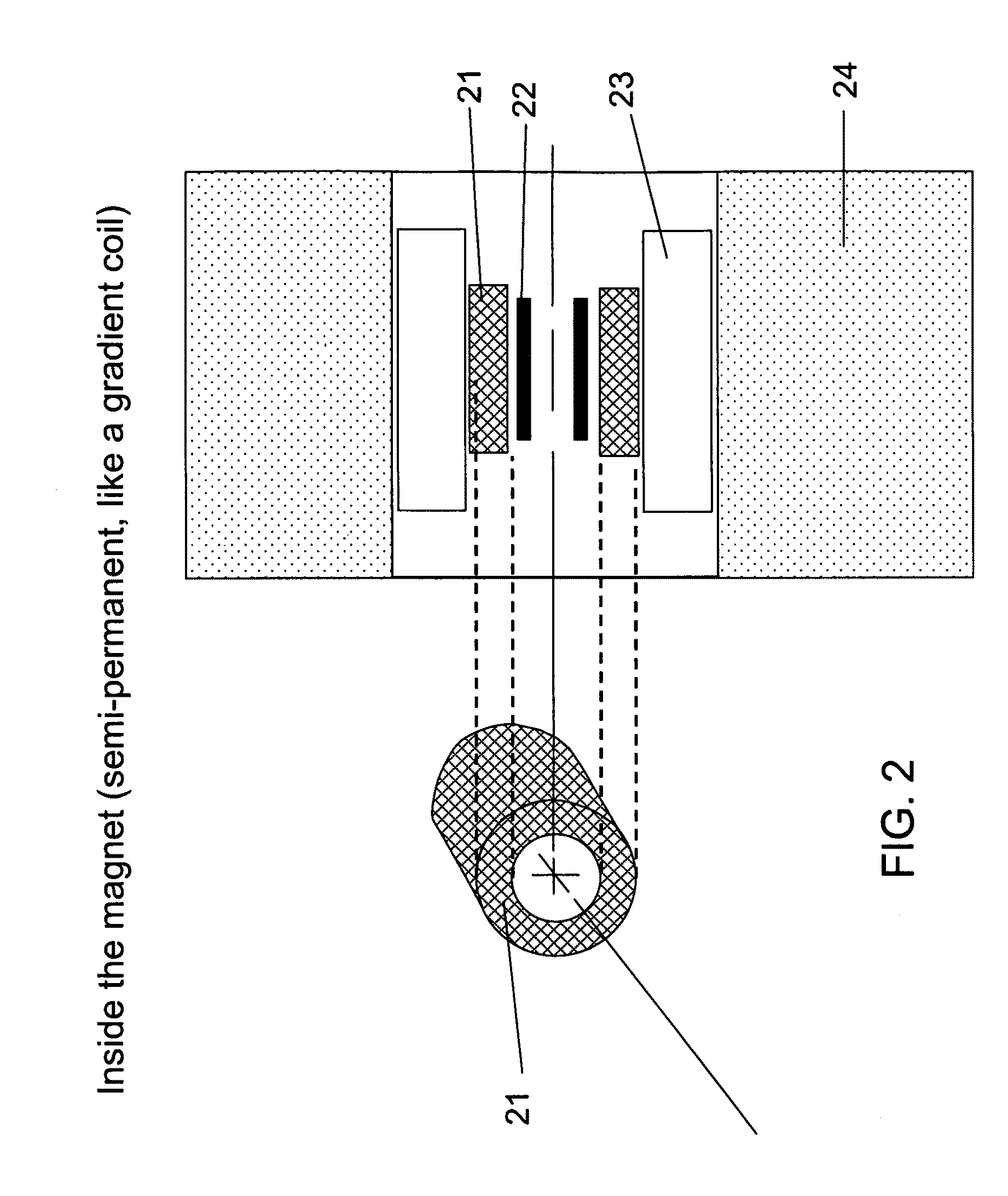Methods and systems of combining magnetic resonance and nuclear imaging
a magnetic resonance and nuclear imaging technology, applied in the field of multimodal medical imaging, can solve the problems of increasing signal noise and distortion, ignoring the theoretical benefits of trying to combine spect and mri within a single system, and combining a gamma photon detector with a czt detector is not a trivial task,
- Summary
- Abstract
- Description
- Claims
- Application Information
AI Technical Summary
Benefits of technology
Problems solved by technology
Method used
Image
Examples
Embodiment Construction
[0050]In the following detailed description, only certain exemplary embodiments of the present invention are shown and described, by way of illustration. As those skilled in the art would recognize, the described exemplary embodiments may be modified in various ways, all without departing from the spirit or scope of the present invention. Accordingly, the drawings and description are to be regarded as illustrative in nature, and not restrictive.
[0051]An embodiment of the present invention is designed to enhance the MRI imaging by incorporating an additional modality in the same gantry as operated by an MRI machine. The added modality is SPECT, limited-angle SPECT, or planar imaging based on the single photon emission principle.
[0052]In one embodiment of the present invention, the single photon emission imagers are based on a semiconductor direct conversion detector, such as a cadmium zinc telluride (CZT) detector. The embodiment of the present invention reduces the possibility of op...
PUM
 Login to View More
Login to View More Abstract
Description
Claims
Application Information
 Login to View More
Login to View More - R&D
- Intellectual Property
- Life Sciences
- Materials
- Tech Scout
- Unparalleled Data Quality
- Higher Quality Content
- 60% Fewer Hallucinations
Browse by: Latest US Patents, China's latest patents, Technical Efficacy Thesaurus, Application Domain, Technology Topic, Popular Technical Reports.
© 2025 PatSnap. All rights reserved.Legal|Privacy policy|Modern Slavery Act Transparency Statement|Sitemap|About US| Contact US: help@patsnap.com



